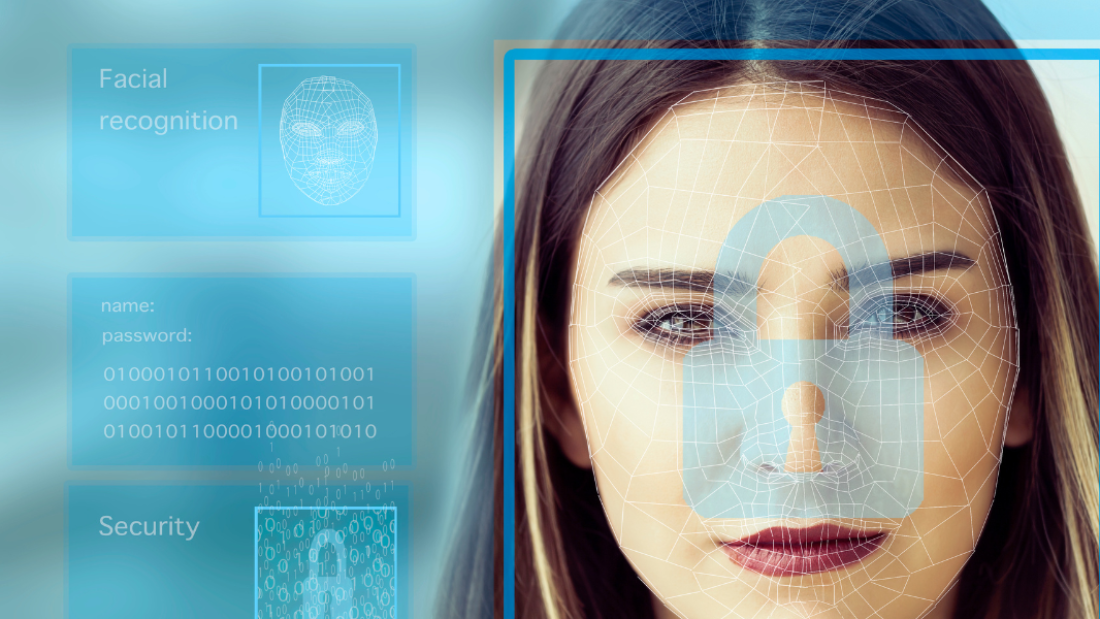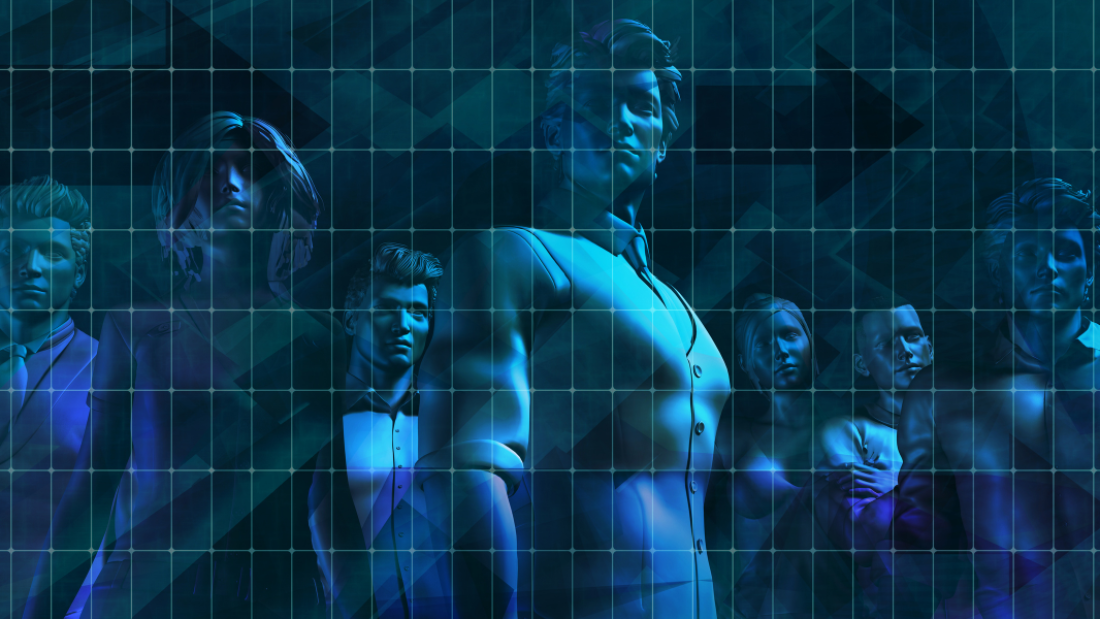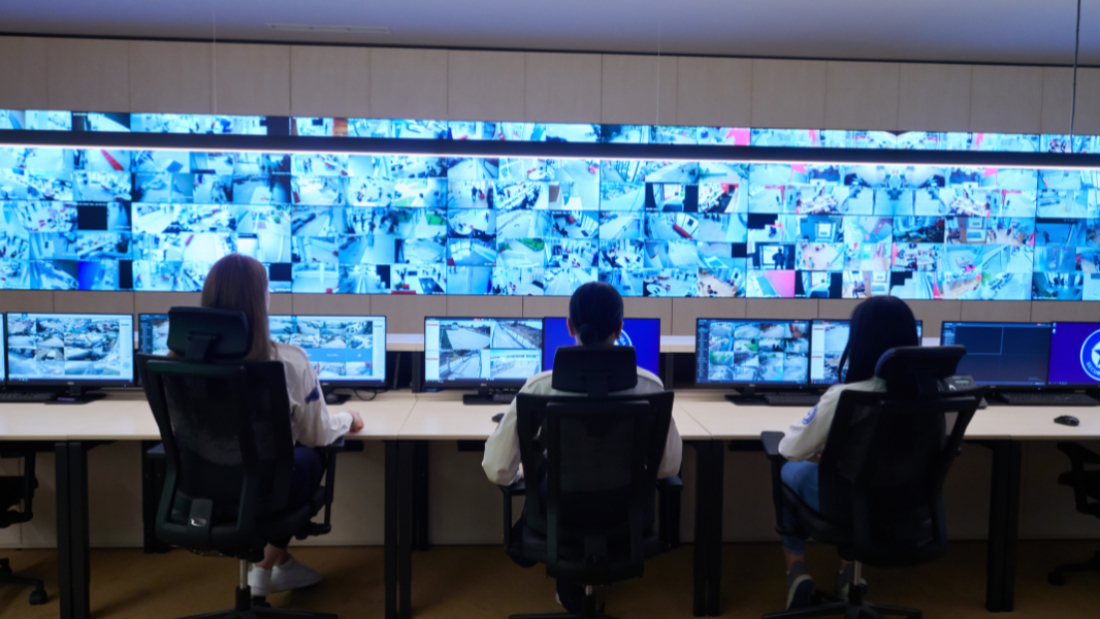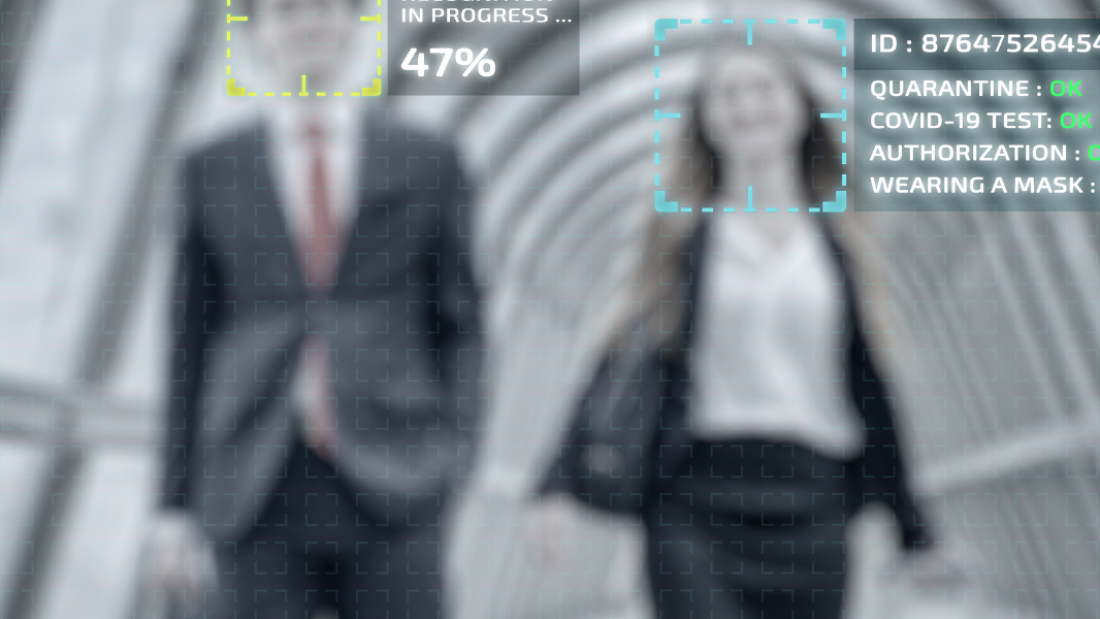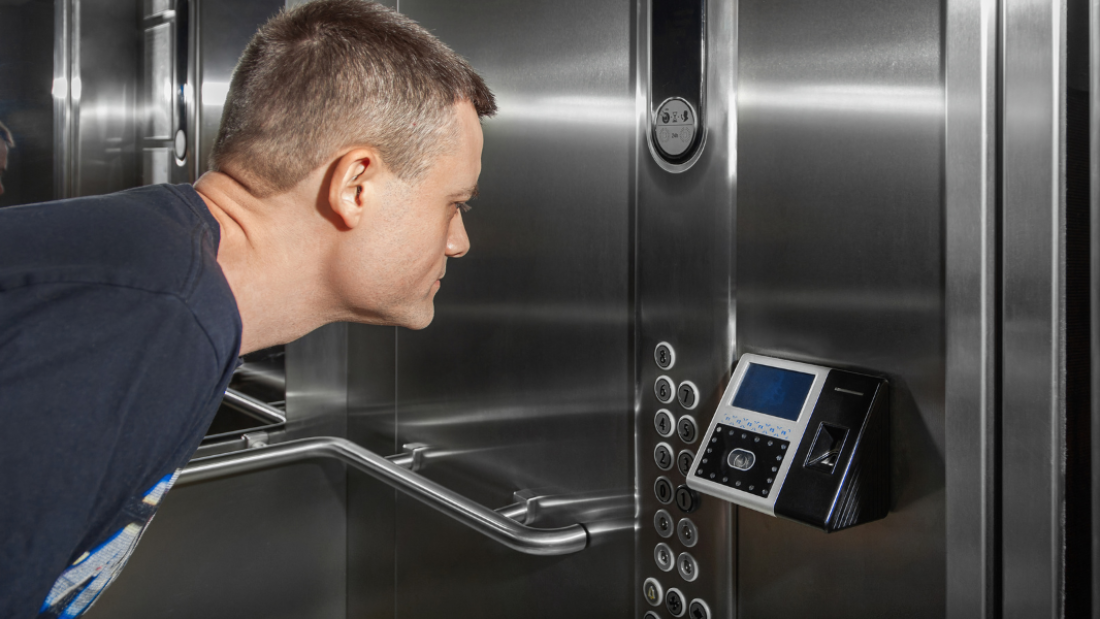Facial recognition technology has revolutionized the way we interact with devices and access secure spaces. From unlocking smartphones to enhancing security measures, this cutting-edge innovation is reshaping various industries. With roots tracing back to the 1960s, when scientists began exploring pattern recognition and computer vision, facial recognition has come a long way. Today, it plays a pivotal role in law enforcement, retail, healthcare, and more.
As we delve into the intricacies of facial recognition technology, we will explore its evolution, applications, benefits, and potential concerns. Join us on a journey through the past, present, and future of this transformative technology.
Understanding Facial Recognition
Definition
Facial recognition, also known as face recognition, is a technology that identifies or verifies a person from a digital image or video frame. It plays a crucial role in biometric security by analyzing facial features such as the distance between the eyes, nose, and mouth.
Facial recognition technology uses facial expressions and unique facial characteristics to determine an individual’s identity. By comparing these features with a database of known faces, the system can accurately match and identify individuals.
Prevalence
Facial recognition technology has become increasingly prevalent in daily life. It is commonly used for unlocking smartphones, accessing secure facilities, and even tagging friends in social media photos. Face verification is also utilized in airports for passport control and surveillance systems for public safety.
In retail settings, some stores use facial recognition to track customer behavior and personalize shopping experiences. However, the widespread adoption of this technology raises concerns about privacy invasion and data security.
Ethical Implications and Public Perception
The use of facial recognition has sparked debates surrounding privacy rights and civil liberties. Critics argue that widespread surveillance through facial recognition poses a threat to personal freedoms and could lead to mass tracking of individuals without their consent.
On the other hand, proponents of facial recognition highlight its potential for enhancing security measures and streamlining identification processes. They emphasize its role in preventing crime and improving public safety through identity verification.
Pros:
Enhances security measures
Streamlines identification processes
Cons:
Raises concerns about privacy invasion
Poses threats to civil liberties
How Facial Recognition Works
Detection Process
Facial recognition begins with face detection, where the system locates and extracts faces from images or videos. This step involves identifying facial features like eyes, nose, and mouth. The algorithm then creates a digital map of these features for analysis.
The next stage is facial feature extraction, where the system captures unique characteristics such as the distance between eyes or the shape of the jawline. These features are converted into data points for comparison and matching against stored templates.
Matching and Identification
Once the features are extracted, the system compares them to a database of known faces using facial recognition algorithms. The algorithm calculates the similarity between the captured features and those in the database to find a match.
In cases of facial authentication, the system verifies if the detected face matches an existing template within the database. This process is crucial for security applications like unlocking smartphones or accessing secure locations.
Unique Face Features
Facial recognition systems analyze specific facial characteristics like facial landmarks, skin texture, and even micro-expressions. These unique features are used to create a facial recognition model that distinguishes one individual from another accurately.
The system’s facial identification algorithm focuses on key facial elements that remain consistent over time, ensuring reliable identification. By examining multiple points on a face, the algorithm enhances accuracy in recognizing individuals.
Facial Recognition vs. Other Biometric Systems
Unlike other biometric systems like fingerprint or iris scanners, facial recognition offers non-intrusive identification. Users do not need to make physical contact with any device, making it convenient for various applications.
Moreover, facial recognition provides real-time identification, allowing quick access to devices or premises without delays. This feature makes it ideal for scenarios requiring rapid authentication without compromising security measures.
Applications of Facial Recognition
Law Enforcement
Facial recognition is extensively used in law enforcement for identifying suspects and solving crimes. Police departments across the globe rely on facial recognition systems to match faces captured on CCTV cameras with criminal databases. This technology has significantly improved the efficiency of investigations and helped in reducing crime rates.
Facial recognition plays a crucial role in enhancing public safety by quickly identifying individuals in crowded places or during large events. By utilizing this technology, law enforcement agencies can swiftly respond to potential threats and prevent criminal activities before they escalate.
Retail Industry
The retail industry has embraced facial recognition technology to enhance customer experiences and boost sales. Many stores use facial recognition systems to analyze customer demographics, track shopping patterns, and personalize marketing strategies. By understanding customer preferences through facial recognition data, retailers can tailor their offerings to meet specific needs effectively.
Moreover, some retail establishments have implemented facial recognition for security purposes, such as preventing theft and ensuring a safe shopping environment. By monitoring individuals’ movements within stores, retailers can identify suspicious behavior and take immediate action to mitigate risks.
Personal Devices and Customer Service
Facial recognition has become a common feature in personal devices like smartphones and laptops, enabling users to unlock their devices securely using facial verification. This technology offers a convenient and efficient way to safeguard personal information while providing a seamless user experience.
Furthermore, various industries have integrated facial recognition into their customer service operations to offer personalized assistance and streamline interactions. For instance, businesses use facial recognition solutions to greet customers by name, anticipate their needs, and provide tailored recommendations based on previous interactions.
Healthcare and Attendance Tracking
In the healthcare sector, facial recognition technology addresses critical issues such as patient identification, access control, and security. Hospitals utilize facial recognition systems to verify patients’ identities accurately, reduce medical errors, and enhance overall patient safety. This innovative application has revolutionized healthcare delivery by improving operational efficiency and ensuring accurate treatment procedures.
Moreover, facial recognition is increasingly being adopted for attendance tracking in educational institutions and workplaces. By automating attendance processes through biometric identification, organizations can eliminate manual errors, enhance security measures, and streamline administrative tasks efficiently.
Challenges in Implementing Facial Recognition
Privacy Concerns
Facial recognition systems raise privacy concerns due to the potential misuse of personal data. Individuals worry about their information being stored and accessed without consent.
Facial recognition technology’s capability to track individuals raises red flags regarding privacy invasion. The constant monitoring of people’s movements can lead to a breach of personal boundaries.
Risk of False Identifications
False identifications in facial recognition systems pose significant risks. Physical access control based on faulty identifications can result in unauthorized access to secure areas.
The consequences of false positives can be severe, leading to mistaken identities and subsequent legal issues for innocent individuals. Devices relying on facial recognition must ensure high accuracy levels to prevent such errors.
Societal Implications
Surveillance through facial recognition impacts societal dynamics by raising concerns about public trust. Excessive monitoring can erode trust between citizens and authorities, leading to social unrest.
Public perception of surveillance technologies influences their acceptance and adoption. Issues related to data security and privacy can undermine the public’s confidence in facial recognition systems.
Strategies to Overcome Implementation Challenges
Data Protection
Protecting user data is crucial in facial recognition technology. Implement encryption techniques to safeguard sensitive information. Regularly update security measures to prevent unauthorized access.
Minimizing Errors
To minimize errors, utilize advanced algorithms for accurate facial recognition. Implement quality control measures to ensure precise identification. Regularly calibrate the system to maintain operational efficiency.
Building Public Trust
Transparency and accountability are key to building public trust. Provide clear information on how facial recognition data is used. Engage with the community to address concerns and build a positive relationship.
Case Studies and Success Stories
Innovative Applications
Facial recognition technology has revolutionized customer experiences in businesses by enabling personalized customer interactions. For instance, some retail stores utilize facial recognition to analyze customer behavior and preferences, providing tailored recommendations and enhancing overall satisfaction. This innovative application not only streamlines the shopping process but also boosts customer loyalty.
In the healthcare sector, facial recognition plays a crucial role in improving patient experiences. By utilizing this technology, hospitals can efficiently manage patient data, provide personalized experiences, and ensure seamless interactions. Patients benefit from quicker check-ins, personalized care plans, and enhanced security measures, leading to a significant improvement in overall healthcare services.
Impact on Crime Reduction
Real-world scenarios have demonstrated the significant impact of facial recognition on crime reduction. In certain regions, law enforcement agencies have successfully utilized this technology to identify suspects and prevent criminal activities. For example, in London, facial recognition systems have helped police apprehend wanted individuals by matching them against a centralized criminal database. This proactive approach has led to a notable decrease in crime rates and improved public safety.
Customer Experiences Enhancement
Facial recognition technology has transformed customer experiences through personalized customer profiles and tailored services. For instance, some hotels use facial recognition for check-ins, allowing guests to bypass traditional procedures and access their rooms swiftly. This seamless process not only enhances user experience but also showcases the hotel’s commitment to innovation and convenience.
Moreover, in the banking sector, facial recognition has been instrumental in improving security measures and customer data protection. Financial institutions utilize this technology to verify customers’ identities during transactions, reducing the risk of fraud and unauthorized access. Customers appreciate the added layer of security provided by facial recognition, leading to increased trust and satisfaction with their banking experiences.
Pros:
Enhanced customer experiences
Improved security measures
Personalized services
Cons:
Privacy concerns
Potential misuse of data
Future Trends in Facial Recognition
Advancements in Accuracy
Facial recognition technology is evolving rapidly, with advancements in deep learning algorithms improving accuracy. These developments allow for more precise identification of individuals and reduce the margin of error. As facial recognition cameras become more sophisticated, they can capture finer details, enhancing overall performance.
Biometric technologies are also revolutionizing the industry by introducing advanced touchless experiences. This shift towards touchless interactions is reshaping how facial biometrics are utilized, offering a more seamless and convenient authentication process. By incorporating biometric privacy measures, companies can ensure the security and protection of biometric data, instilling trust among users.
Artificial Intelligence Integration
The integration of artificial intelligence (AI) plays a pivotal role in enhancing facial recognition capabilities. AI algorithms analyze vast amounts of data to improve biometric information processing, leading to faster and more accurate identifications. Through AI-powered systems, surveillance systems can detect faces in real-time, enabling timely threat detection and response.
Enhanced accuracy through deep learning algorithms
Introduction of touchless experiences for convenience
Incorporation of biometric privacy measures for data protection
Regulatory Changes Impact
As facial recognition technology continues to advance, regulatory changes are on the horizon, impacting the industry significantly. Stricter regulations on biometric authentication and data handling are expected to shape how companies utilize facial recognition technology. Compliance with evolving biometric privacy laws will be crucial for businesses to maintain transparency and accountability in handling sensitive information.
Biometric technology partners must adapt to these regulatory shifts by implementing robust security measures and ensuring biometric data is handled ethically. The potential changes in regulations will drive innovation in the industry, fostering the development of more secure and privacy-focused solutions.
Stricter regulations on biometric authentication and data handling
Emphasis on compliance with biometric privacy laws
Innovation driven by regulatory changes
Advantages of Facial Recognition
Increased Security
Facial recognition technology enhances overall security by accurately identifying individuals, aiding in crime prevention and law enforcement. It provides a powerful tool for surveillance and monitoring suspicious activities.
The technology can be integrated with security systems to restrict access to sensitive areas only to authorized personnel. This feature significantly reduces the risk of unauthorized entry and potential security breaches.
Crime Prevention
One of the key benefits of facial recognition is its contribution to crime prevention. By quickly identifying suspects or persons of interest, law enforcement agencies can act swiftly to prevent crimes before they occur. This proactive approach helps in maintaining public safety and reducing criminal activities.
Facial recognition can also assist in locating missing persons or victims by analyzing vast databases of facial images. This capability has been instrumental in reuniting families and solving cold cases that were previously unsolvable.
Convenience in Everyday Applications
Facial recognition offers unmatched convenience in various everyday applications, from unlocking smartphones to boarding flights swiftly. The technology eliminates the need for traditional methods like passwords or PINs, streamlining authentication processes for users.
In retail settings, facial recognition can personalize customer experiences by recognizing loyal customers and offering tailored recommendations. This personalized approach enhances customer satisfaction and loyalty, ultimately benefiting businesses.
Integration Potential with Other Technologies
The integration of facial recognition with other technologies opens up endless possibilities for enhanced functionality. For instance, combining facial recognition with artificial intelligence can enable emotion detection, allowing systems to adapt responses based on users’ emotional cues.
Moreover, integrating facial recognition with Internet of Things (IoT) devices can enhance home security measures. Homeowners can use facial recognition to grant access to trusted individuals or monitor their property remotely through connected devices.
Final Remarks
Facial recognition technology is revolutionizing various industries, from security to marketing, offering unparalleled convenience and efficiency. Understanding its mechanisms, applications, challenges, and future trends equips you with the knowledge to navigate this innovative landscape successfully. By recognizing the advantages it brings and strategies to overcome obstacles, you can harness the power of facial recognition to drive positive change in your endeavors. Embrace the evolution of this technology, stay informed about its advancements, and explore how it can elevate your operations while being mindful of ethical considerations and privacy concerns.
Explore the myriad possibilities that facial recognition presents, adapt to its transformative capabilities, and seize the opportunities it offers. Stay proactive in leveraging this cutting-edge tool to streamline processes, enhance customer experiences, and propel your initiatives towards unprecedented success. Embrace the future with confidence and curiosity, knowing that facial recognition can be a powerful ally in achieving your goals.
Frequently Asked Questions
What is Facial Recognition?
Facial recognition is a technology that identifies or verifies a person from a digital image or video frame. It analyzes facial features to match against stored data, enabling secure access control and personalized user experiences.
How does Facial Recognition Work?
Facial recognition works by capturing an image or video, detecting faces through algorithms, analyzing unique facial features like distance between eyes, and comparing these features with a database to make accurate identifications.
What are the Applications of Facial Recognition?
Facial recognition has various applications including security systems, unlocking devices, personalized marketing, law enforcement for identifying suspects, access control in buildings, and contactless authentication in airports and events.
What are the Challenges in Implementing Facial Recognition?
Challenges in implementing facial recognition include privacy concerns, accuracy issues especially with diverse faces, potential biases in algorithms, regulatory compliance requirements, and public perception regarding surveillance and data security.
How can Implementation Challenges in Facial Recognition be Overcome?
To overcome implementation challenges in facial recognition, strategies such as transparency in data usage, continuous algorithm training with diverse datasets, complying with regulations like GDPR, conducting regular audits for bias detection, and educating the public on its benefits are essential.
Can you Provide Examples of Case Studies and Success Stories of Facial Recognition?
Case studies and success stories of facial recognition include its use in law enforcement to solve crimes faster, enhancing customer experience at airports by speeding up check-ins, improving security at events by identifying potential threats efficiently, and streamlining access control in workplaces for better safety measures.
What are the Future Trends in Facial Recognition?
Future trends in facial recognition include advancements in accuracy through AI and machine learning, integration with IoT devices for seamless experiences, increased adoption in healthcare for patient identification, enhanced cybersecurity measures using facial biometrics, and expanded use in smart cities for public safety initiatives.




